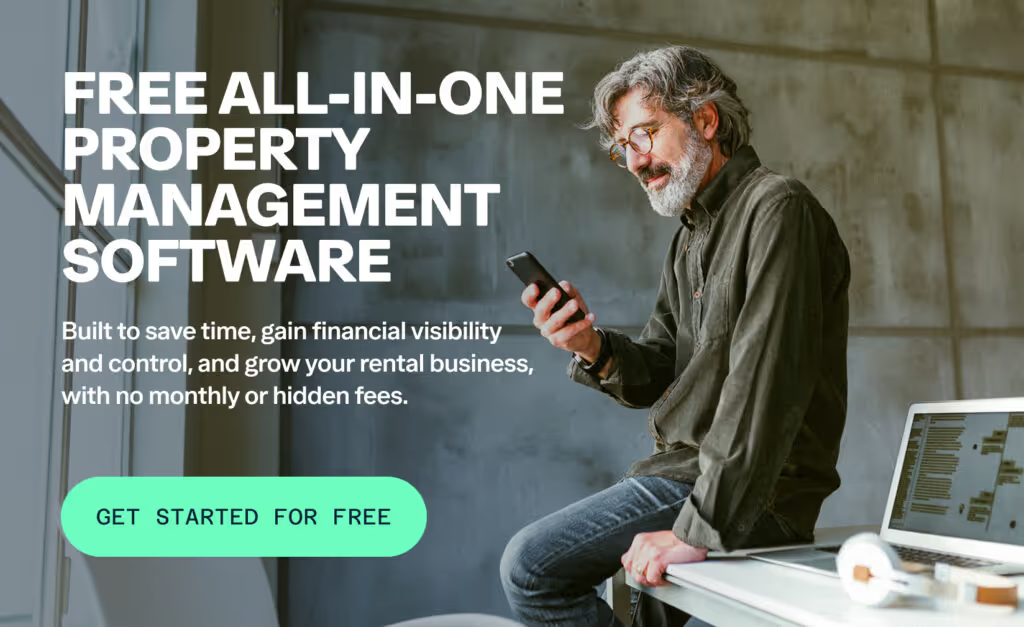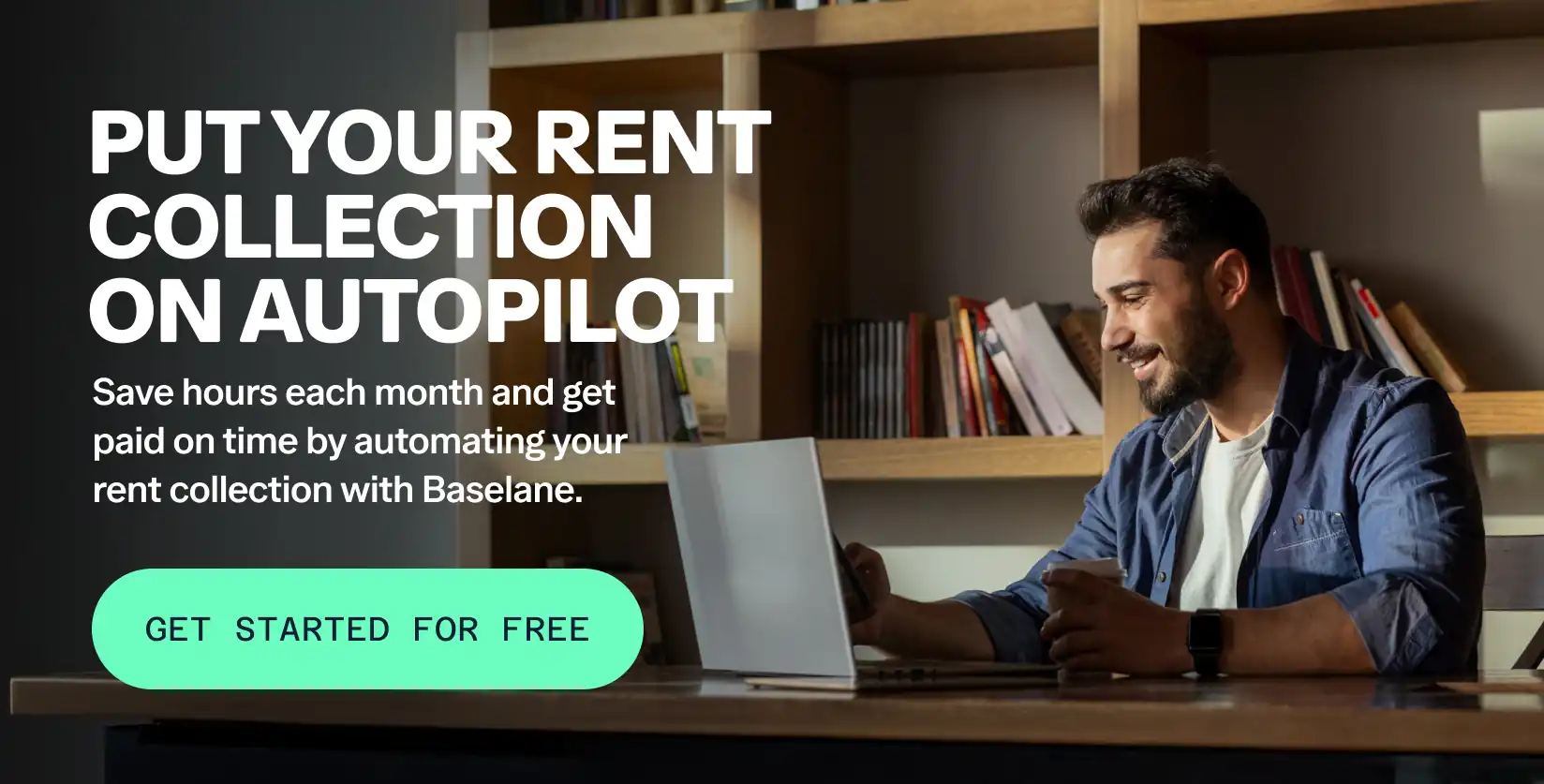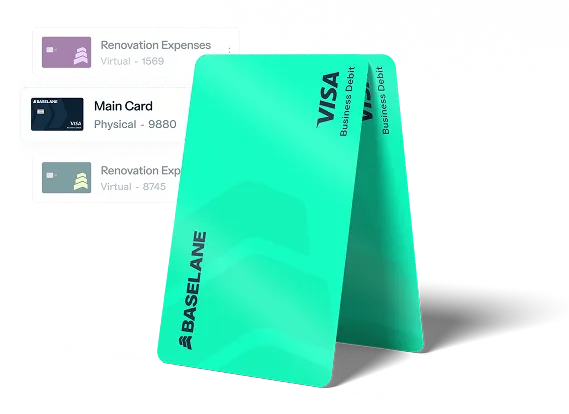Navigating rent collection effectively is a cornerstone of successful property management. As a landlord, you seek payment methods that are secure, cost-effective, and convenient for both you and your tenants. While getting rent by wire transfer may seem quick, it often has hidden problems and risks you should know about.
This article explores the ins and outs of receiving rent by wire transfer, detailing the risks, associated fees, and processing times. We will also talk about safer and more efficient alternatives to streamline your rental income management.
Key takeaways
- Wire transfers for rent carry significant risks, including irreversibility and high fraud potential.
- Both landlords and tenants incur fees for wire transfers, making them costly for recurring payments.
- Domestic wire transfers usually complete the same day, but errors are difficult to correct.
- ACH transfers offer a safer, more affordable, and automated solution for rent collection.
- Online payment platforms and dedicated landlord software provide superior security and convenience compared to wire transfers.
What is receiving rent by wire transfer?
Receiving rent by wire transfer involves an electronic transfer of funds directly from your tenant's bank account to your landlord bank account for rent wire transfers. This method moves money between financial institutions, often across different banks. Unlike other payment types, a wire transfer for rent pushes funds directly, making it a final transaction.
Wire transfers are typically used for large, one-time payments rather than regular recurring payments. You might encounter wire transfers for things like security deposits or initial rent payments. If you accept rent by wire transfer, you need to provide specific banking details to your tenants for the transaction.
Risks and downsides of collecting rent via wire transfer
While wire transfers offer speed, their inherent characteristics pose considerable risks for landlords. Understanding these risks is crucial when considering receiving rent by wire transfer.
Fraud and irreversibility
A significant risk when using wire transfer for rent collection is the high potential for fraud. Wire transfers are often irreversible once initiated, meaning if funds are sent fraudulently or to an incorrect account, they are extremely difficult to retrieve.This irreversibility makes them more attractive to scammers.
If a tenant sends money to the wrong account or is scammed into wiring funds, you might not receive the rent, and the tenant could lose their money. This places a significant burden on both parties. You must ensure you are always dealing with trusted individuals when accepting wire payments.
Limited consumer protections
Wire transfers generally offer limited consumer protections compared to other payment methods. Unlike credit card disputes or ACH reversals under certain conditions, there are few mechanisms to recall a wire transfer. This lack of protection means that if a payment issue arises, resolving it can be complex and costly.
For example, if a tenant claims non-receipt of a service after payment, they have minimal recourse. This can lead to disputes and legal challenges for you.
Operational complexity
This rent collection method lacks the automation found in modern rent collection tools. You need to manually ensure tenants have the correct banking details, confirm each incoming wire, and then record cash paid for rent. All of this manual work can soon become burdensome.
Wire transfer fees for landlords and tenants
Wire transfers come with fees for both the sender and the receiver, impacting the total cost of rent collection by wire transfer. These fees can quickly add up, especially for recurring monthly payments.
Incoming domestic wire transfer fees for landlords typically range from $0 to $15, with a median cost of $15. As the landlord, you are responsible for the fee your bank charges to receive the funds. If this is $15 monthly for just one property, you are paying $180 annually just in banking fees for that single rental income stream. Managing multiple units means this cost multiplies proportionally.
Tenants, on the other hand, usually pay between $25 and $35 for outgoing domestic wires. Since the tenant is initiating the wire, they incur the higher outgoing fee. If a tenant pays $25 to $35 every month, that translates to an extra $300 to $420 annually for them—a substantial expense just to pay rent.
The bottom line is that using wire transfer for recurring expenses like rent collection erodes the financial health of both parties.
How long does it take to receive rent by wire transfer?
The processing time for wire transfers can vary, but domestic transfers are generally quite fast. According to SoFi and NerdWallet, domestic wire transfers usually complete within the same day. This speed is one of the primary reasons landlords might consider accepting them.
International wires, however, can take longer, typically between one to five business days to clear. For first rent wire transfer payments, this speed can be appealing for quick move-ins. However, speed alone does not outweigh the associated risks and costs, as mentioned above.
What information should landlords provide tenants for wire transfers?
Provide tenants with your specific and accurate banking details. Any error in this information can lead to delays or, worse, the funds being sent to the wrong recipient.
Typically, you’ll need to provide the following details.
- Your full bank name
- The bank's routing number
- Your account number
- Account type (checking or savings)
Safer and more cost-effective alternatives to wire transfers
Given the risks and fees associated with wire transfers, landlords should explore safer, more efficient alternatives for collecting rent. These options offer better protection, lower costs, and increased convenience.
ACH transfers
Automated Clearing House (ACH) transfers are a robust alternative to wire transfers for rent. ACH transfers are payments made directly from one bank account to another. These payments are moderated by an ACH network, a centralized system for moving money between financial institutions in the United States.
Not only do ACH direct deposits come with stronger consumer protections compared to wire transfers, regulated by NACHA (National Automated Clearing House Association), they also offer low cost of transfer and better reliability.
The median cost of initiating and receiving an ACH payment ranges between 0.26 cents and 0.50 cents, according to Association for financial professionals’s 2022 Payments Cost Benchmarking Survey.
When you use Baselane’s banking platform, you can integrate ACH rent collection with bookkeeping, reducing the need for any manual rent collection.
Paper checks
While the rental market is rapidly shifting toward digital payments, paper checks remain a viable option, especially when compared to the high transaction fees associated with wire transfers. Our 2025 U.S Rental Market Trends Survey reports that paper checks still account for approximately 6% of rent payments.
As an alternative to wire transfers, paper checks offer cost-benefits and are more accessible. For example, a tenant can avoid the substantial recurring fee of $300-$420 annually they would incur from monthly outgoing wire transfers, by using a paper check. This reduces the friction in the payment process.
While collecting rent via check requires manual deposit and record-keeping—meaning you'll need to use tools like a free rent ledger template to track these transactions—the method remains a fee-free way for many tenants to pay. Thus, offering a traditional, accessible, and cost-effective alternative to expensive bank wire services.
Online payment platforms
Online payment platforms designed specifically for landlords are the ideal solution as they offer a more secure, convenient, and fee-efficient way to collect rent than wire transfers.These platforms directly address the wire transfer's major shortcomings by offering economical and automated features.
- Free/Low-cost ACH: Free incoming ACH payments for you, saving both parties hundreds annually.
- High automation: Automated invoicing, monthly rent payment reminders, and automatic late fee assignment.
- Integrated accounting: Payment tracking is directly linked to your property accounting and bookkeeping, providing a tax-ready audit trail.
Baselane is among the best such platforms built for landlords that integrates rent collection with your banking and bookkeeping.
For instance, you can create automated invoicing, set up tenant auto-pay, and receive real-time payment notifications. Each payment is deposited directly into your Baselane or external banking account within 2-5 days, offering faster payouts. This eliminates the need for manual tracking and reduces the risk of late payments.
Best practices for receiving rent by wire transfer
Following some best practices can offset some of the risks associated with receiving rent via wire transfer.
Verification and record keeping
Always verify the sender's identity and the transaction details before confirming receipt of a wire transfer. Confirming payment directly with your bank can prevent issues. Maintaining meticulous records of all incoming wire transfers is also essential for tax purposes and financial oversight.
Use a detailed system for tracking all rent payments, regardless of method. Baselane’s bookkeeping features automatically sync external bank account transactions, helping you keep a consolidated ledger. This helps accurately record all your rental income management activities.
Using separate bank accounts for rent
Establishing a dedicated landlord bank account for rent wire transfers can significantly simplify financial management and reduce commingling risks. This separation ensures clear delineation between personal and business finances. Many landlords choose to have separate accounts for each property.
Baselane offers unlimited checking and savings accounts, which you can tag to a specific property. This makes it easy to organize your funds and track expenses, whether you're dealing with a Gross Rent Multiplier calculation or monitoring your Price-to-Rent Ratio. This practice is crucial for maintaining financial clarity.
Prioritizing integrated rent collection platform for profit
While wire transfer offers speed and security, the associated high fees for you and the tenant, irreversibility, and limited consumer protections make it a less-than-ideal solution for recurring payments.
ACH transfers come close as an alternative due to lower fees and stronger protection, but they still involve manual work. Your best bet to make rent collection a breeze would be to use a dedicated online payment platform, like Baselane, to integrate rent collection with your banking. This way, you’ll boost your rental income, save time, and focus on growing your real estate portfolio.
Check out Baselane’s rent collection tools and banking solutions, designed specifically for landlords.
FAQs
Can landlords accept rent by wire transfer?
Yes, landlords can accept rent by wire transfer, but it comes with significant risks like irreversibility and high fees. It is generally not recommended for regular, recurring rent payments due to these downsides. Safer and more cost-effective alternatives are available.
Is wire transfer safe for landlords to receive rent?
Wire transfers are generally not considered the safest way for landlords to receive rent due to their irreversible nature and limited consumer protections against fraud.
How much do banks charge landlords for wire transfers?
Banks typically charge landlords around $0 to $15 for receiving an incoming domestic wire transfer. Tenants usually pay a higher fee, ranging from $25 to $35, for sending an outgoing domestic wire. These fees vary by bank.
How long does it take for landlords to receive rent by wire transfer?
Domestic wire transfers are generally completed within the same day. International wire transfers, however, often take longer, typically between one to five business days to process and clear.
What details should landlords provide tenants for wire transfers?
Landlords should provide their full bank name, the bank's routing number, their specific account number, and the account type (checking or savings).

















